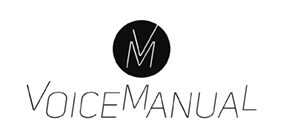Singing high is without doubt one of the most wanted singing skills. In this article we will tell you what kinds of things are typically preventing singers from being able to sing high notes. The reason why singing high is difficult is rarely that it wouldn’t be possible; usually the case is that the singer who would like to sing high notes hasn’t simply known how to do it before.
The biggest part of those who sing – for fun or professionally – would like to sing higher. If any of the following sound familiar, we recommend that you keep on reading:
- Do you face a total stop that prevents you from singing high notes?
- Do you think that you were simply not built to sing high notes at all?
- Does your voice become weaker and more quiet when singing higher?
- Would you like to be able to sing with the same kind of intensity and loudness as in the lower part of the voice?
- Would you like to sing higher in a more controlled way?
- Does singing high notes feel uncomfortable? Does you voice become hoarse after singing high notes?
High Notes Can Be Sung In Many Ways, But They All Share One Thing In Common
Notes at the top of the range can be sung in many ways. A choir soprano sings often with a flute-like voice, a choir tenor may use another strategy when singing high. Opera singers can also sing softly, but many link opera singers to high notes that are also loud. Gospel singers, rock singers and musical theatre singers belt their most intense high notes giving the listeners goose bumps.
No matter if your goal is one of the ones mentioned before, or something else, there is one thing that applies to all singing styles when singing high: the higher the note you want to sing, the faster the air is supposed to be allowed to vibrate in between the vocal folds. There are many tools to reach a higher vibration, but also obstacles that prevent the voice from doing that.
Things That Make Singing High Notes Difficult
There are many obstacles that prevent from singing high. A good rule of thumb could be that many problems with singing high notes occur because the vocal instrument is tried to be used in the same way as when singing low notes. This results in lack of allowing the body to adapt and change as higher notes require. It is not extraordinary either to state that a singer might not have any experience in singing high and the body simply doesn’t know what to do.
Many things make singing high notes difficult. Here are some of the most common ones:
- The muscles needed in producing different pitches are not active enough
- Vocal strain
- Using too much air pressure
- The space in the throat and the mouth have not been adapted to work for high notes
- The alignments in the body are not in balance
- Breathing has not been adapted to fit the singing style used
- The vocal folds are not allowed to work as high notes require
Each and every one of the things that cause problems with high notes can be solved by using the right functions and exercises. The essential part is indeed to reach a favorable balance between the breath flow, the vocal folds and the certain activities within the body and the vocal tract. When all of the aspects needed are trained to fit the situation, singing high notes becomes easier.
Dismantle The Obstacles That Prevent From Singing High
It is worth it to dismantle the obstacles that stand in the way of high notes, for the advantages that come from that also make lower notes easier. A voice teacher is usually needed in order to be able to be aware of the obstacles and to solve them. Rarely only self-study is enough here, for many obstacles tend to stay unconscious to the student.
One example here is vocal strain. It is usually obvious that an unpleasant constriction in the throat makes it difficult to sing high notes. However, a vocal strain can also happen in a minimal way that a singer may not even feel as strain or perceive as unpleasant. Vocal strain can also be a normal state for a singer, when there are no other experiences of using the vocal instrument. Even when a singer cannot feel straining in their throat, the voice can still get tired or hoarse as a result of a little constriction.
Patience is needed in dismantling the obstacles that prevent us from singing high notes. Even if a singer learns to recognize them quickly and to bypass them easily, it still takes time to learn another way of using the muscles and to solidify the wanted actions.
Activate The Musculature That Is Responsible For Producing Different Pitches
As we mentioned earlier, there are several ways to sing high notes. A professional voice teacher can help you find the right ways to find the right functions, but after that the responsibility belongs to the singer: learning requires repetitions that practice offers.
The higher the note, the faster the vocal folds vibrate. So that the faster vibration could be possible, the vocal folds usually elongate when singing higher and in turn contract when singing lower. Also the length and the shape of the vocal tract can facilitate or complicate the vibration (and the vibratory speed) of the vocal folds.
Singing High Notes Can Be Practiced
As any other skill, singing high notes can be practiced and developed. It is crucial to understand what kinds of matters and functions are needed in order for the high notes to be able to be produced, and to practice them actively.


One thought on “How To Sing High Notes?”